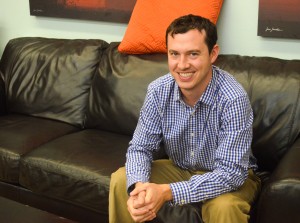For Robert Pronovost, the Common Core State Standards Initiative is more than just another stab at education reform. It’s an invitation to teach the way he and many others have always wanted.

After years of fatigue over educational requirements that often felt restrictive, “The standards finally seem to line up with why we all became educators, which is to support the students in developing their critical-thinking skills and finding the passion that will drive their learning beyond high school and throughout their lives,” said Pronovost, the science, technology, engineering and math coordinator for the Ravenswood City School District.
His optimism is widely shared within the East Palo Alto district, which has a number of schools performing below state targets. Ana Maria Pulido, president of the school board, said the Common Core emphasizes depth of understanding over breadth, and moves away from a focus on repetition and memorization.
“In the future, our students will be far less reliant upon their knowledge of a wide spectrum of topics … and more reliant upon their ability to think creatively, to problem solve and to adapt quickly to changes that are happening in our marketplace on an ongoing basis,” she said.
A group of educators brought together by the National Governors Association developed the Common Core in 2009. The initiative leaves curriculum planning to individual school districts, but provides a set of universal standards for each grade level.
While 45 states have implemented those standards, support is not universal. Texas, Virginia, Alaska and Nebraska, for example, have not adopted either the language arts or mathematics standards.
Some think tanks, ranging from the conservative Heritage Foundation to the more-liberal Brookings Institute, question whether the standards will be able to fix deeply ingrained problems such as parental involvement, school accountability and incentive structures within the education system.
Pilot testing in California is scheduled for this school year. To prepare, Ravenswood is holding many training sessions, and district educators have expressed eagerness to adapt their curriculum to the Common Core.
At an Oct. 17 school board meeting, principals from Ravenswood’s seven elementary and middle schools spoke about their goals for the school year, all mentioning steps they’re taking to transition to the new standards. Anika Guillaume, principal of Cesar Chavez & Green Oaks Academy, said her school has focused on peer coaching and mentoring; highly-qualified teachers will observe newer teachers, provide feedback and plan lessons with them.
“They’re doing these coaching cycles so that we can really make sure that folks understand what does high-quality instruction look like for our kids, in light of Common Core,” Guillaume said.
Pulido believes the new standards are a big improvement over No Child Left Behind, former President George W. Bush’s signature education initiative. Critics of the law said it encouraged teachers to “teach to the test” and motivated states to lower their achievement goals.
Supporters of No Child Left Behind, which enjoyed bipartisan support when Congress passed the law in 2002, said it increased accountability for schools and teachers, boosted test scores and improved upon local standards.
For his part, President Obama has encouraged adoption of the Common Core through his administration’s Race to the Top initiative, the Department of Education’s $4.35 billion contest to incentivize reform in K-12 education. Starting in 2010, states began adopting Common Core standards to make their Race to the Top funding applications more competitive.
“The Common Core standards really were developed through a collaboration of teachers and educators across the country who had a long range view of education, as opposed to the model that has been there before,” Pulido said.
An innovative part of the Common Core includes measurement of the cognitive demands of tasks according to a scale called Depth of Knowledge, or DOK. A DOK Level 1 means students can recall and reproduce what they’ve learned, while a DOK Level 4 means they can synthesize, critique and connect. The Common Core suggests that instructional materials include a mix of DOK levels, progressing from basic recall to extended thinking.
Having looked at some sample questions from new Common Core assessments, Pulido believes these standardized tests will be a major upgrade. She said the new tests will be able to measure depth of knowledge by requiring students to show their work and explain their answers.
However, the Ravenswood district faces special challenges in ensuring that students meet the new standards. Many Ravenswood students are from low-income families, with parents working multiple jobs, and therefore do not have the opportunity to attend preschool or get extensive preparation for school at home.
“I feel like our job as a board is to constantly evaluate how we can streamline services so we can squeeze the maximum value out of each dollar,” Pulido said.
Being a district with so many students who speak English as a second language also poses challenges, Pronovost said, explaining that the district must “be more intentional about our instructional choices and about our teaching of academic language.” To address this issue, Ravenswood is focusing on integrating specially designed academic instruction in English into the new curriculum, he said.
Pulido maintained that the biggest challenge of all, though, is the transition itself.
Tailoring learning towards standardized testing is the easy way out, she said. Developing deep understanding is more difficult for teachers and students alike.
“It definitely is asking everyone to engage in a more intense way than they have before,” Pronovost said, “We have teacher leaders coming in on their weekends to curriculum map, curriculum coordinators preparing professional development sessions differentiated by grade level and all teachers collaborating with their colleagues.”
But, Pronovost emphasized, “The engagement is coupled with an excitement that has been missing for so long.”
